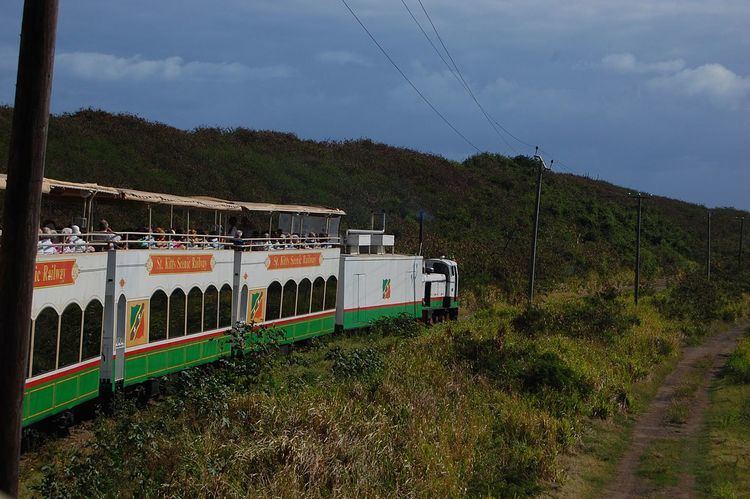Phone +1 869-465-7263 | ||
 | ||
Hours Closed now Friday7:30AM–4PMSaturdayClosedSundayClosedMonday7:30AM–4PMTuesday7:30AM–4PMWednesday7:30AM–4PMThursday7:30AM–4PMSuggest an edit Similar Brimstone Hill Fortress, Mount Liamuiga, Romney Manor, Adonis Tour & Beach fro, St Kitts Marriott Resort | ||
St kitts scenic railway
St. Kitts Scenic Railway is an 18 miles (29 km) long narrow gauge railway line along the coast line on the island of St Kitts with a track gauge of 762 mm (2 ft 6 in).
Contents
St kitts scenic railway
History
The original track was laid from 1912 to 1926, to deliver sugar cane from the plantations to the sugar mill in Basseterre. The sugar mill was built by a group of investors in 1912, to reduce the processing cost and increase profitability by applying the principle of economies of scale since the sugar price drop caused by the worldwide introduction of sugar beet. The first section of the railway line from the Factory Pier to the St. Kitts Basseterre Sugar Factory, with a West Line branch running out 4 miles to Palmetto Point at Trinity and another North Line branch running out to Mills's at Bourryeau Estate, was completed on 28 February 1912. It was celebrated with a special train carrying invited dignitaries. The railway was then operated seasonally from February to June for the annual sugar harvest.
The privately owned St. Kitts Scenic Railway commenced running tourist trains on 28 January 2003. The scheme is run in an unusual partnership between the government and a private enterprise. The slogan “Last Railway in the West Indies” demonstrates its objective to preserve a link to a past, when sugar ruled the island's economy.
Locomotives
The railway owns and operates three diesel-hydraulic locomotives of the PKP class Lyd2 by FAUR in Romania. The classification may be interpreted as follows:
The locomotives are configured with a single cab, with driving positions for both directions. The overhauled diesel engines are from Henschel.
Carriages
The carriages were built by Jeff Hamilton. He designed and constructed a new type of double-decker carriage, of which the roof may be lifted hydraulically to provide unobstructed open-air seating at the top deck, while the lower air-conditioned and carpeted parlor deck has huge six–foot vaulted windows, and is furnished with cushioned rattan chairs at inlaid tables and decorated by paintings by local artists. This level includes a bar and a restroom in each car.
